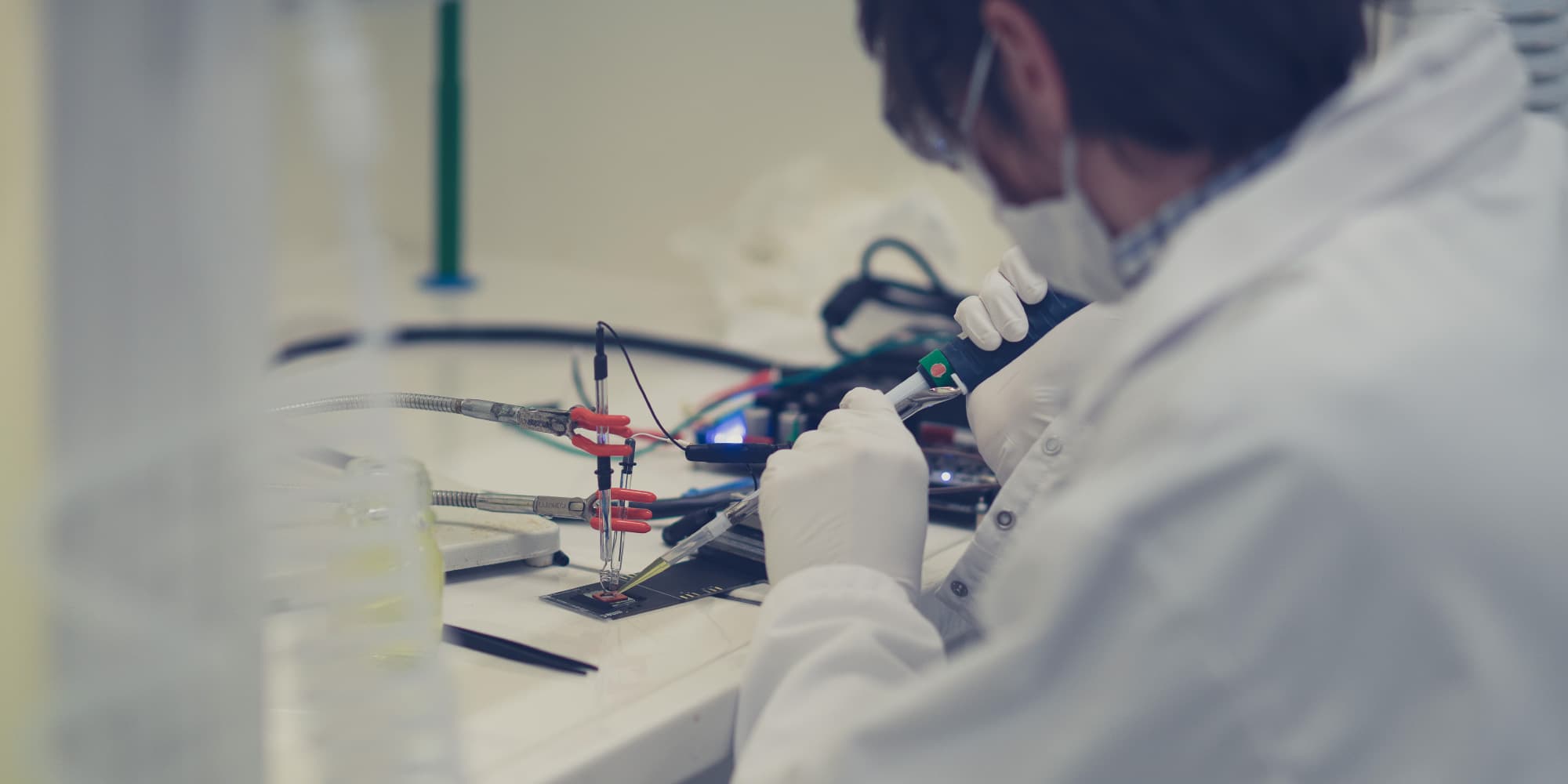
Omics technologies
Exploit the power of silicon to develop omics technology solutions with orders-of-magnitude improvements in throughput, sample-to-result time, and costs.
Healthcare is ready to take another leap forward. We’re headed towards a ten dollar cost to sequence an entire human genome, and look forward towards compact point-of-care sequencing systems that will democratize personalized therapies.
This is in large part due to technologies such as microfluidics, solid-state nanopores, on-chip PCR, micro-electrode arrays, ... They allow us to build tools that reveal new insights at the molecular level. And thereby increase our knowledge of the basic building blocks of life, such as genes, proteins and metabolites.
These omics technologies – genomics, proteomics, metabolomics, transcriptomics, and so on – leverage nanoelectronics to achieve the massive parallelization that’s needed to simultaneously assess a large pool of molecules. Innovations in this field are directed at:
- increasing throughputs
- improving accuracy
- lowering costs
Additionally, omics technology systems need access to powerful computation hardware and algorithms to process skyrocketing amounts of data.
As a nano- and digital technology research hub with more than a decade of experience in life science technologies, imec is ready to take omics to the next level. Through a full-stack, multidisciplinary approach, and collaborations with a wide network of medical and technology partners.

Omics technologies from a system perspective
Next-gen compact, robust and mass-producible on-chip systems need to incorporate full workflows. That naturally entails the readout, for instance of a DNA sequence. But it must also include steps such as sample preparation and even data analysis.
The development of such systems therefore requires a holistic approach that is able to build the different components and combine them into integrated, complex workflows. It also necessitates cross-layer optimization of system levels such as materials, components, circuits, and software. This concept from the semiconductor industry achieves orders-of-magnitude improvements of cost, throughput, and sample-to-result time.
Five semiconductor-based concepts to revolutionize DNA sequencing
To enable this holistic approach, imec leverages its:
- unique infrastructure, including advanced 200- and 300mm cleanrooms and specialized labs
- multidisciplinary expertise, from more than 5,000 researchers, including engineers, biologists, chemists, and medical experts
Imec’s omics technology portfolio
Over the last decade, imec has been working with key players in the genomics industry – turning its semiconductor expertise into a wide portfolio of relevant technologies.
Read the 2020 press release about our collaboration with Roswell Biotechnologies
Dive into our webinar series on genomics technologies
Here’s a non-exhaustive overview of our capabilities:
- smart precision fluidics and cell sorters
- solid-state nanopores for single-molecule DNA and protein sensing
- integrated photonics
- advanced CMOS electronics
- multi-electrode assays (MEA) for spatial omics
- lens-free imaging
- nano-imprint lithography
- custom ASICs for high-throughput sensor readout
- advanced packaging, such as fan-out wafer-level packaging
- DNA sequence analysis software
- privacy-preserving AI for population genomics
Want access to imec’s infrastructure and expertise to speed up your development of disruptive omics solutions?
Click the button below to get in touch.

















